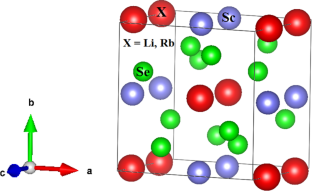Computational study of the structural, optoelectronic and thermoelectric properties of scandium-based ternary chalcogenides XScSe2 (X = Li, Rb) for applications in photovoltaic cell
Abstract
In the current study, the first principle technique that depends exclusively on density functional theory is used to explore the structural, optoelectronic and thermoelectric properties of scandium-based ternary chalcogenides XScSe2 (X = Li, Rb). The Full Potential Linearly Augmented Plane Wave (LAPW) method accompanied by PBE-GGA functional is used to determine the optimized lattice parameters of both chalcogenides. The valence band maxima (VBM) and conduction band minima (CBM) occur at the same wave vector having a significant direct band gap such as 1.42 eV for LiScSe2 and 1.54 eV for RbScSe2 leading to their semiconductor behavior. The results of the partial density of states (PDOS) of the considered substances reflect that 2s states of lithium, 3d states of each Rb and Sc, and 4p orbitals of Se are mainly responsible for the rise in electronic conductivity. The optical results show that these chalcogenides exhibit a significant rise in absorptivity and optical conductivity in the UV energy region when the photons are incident upon, where low reflectivity is noticed. The thermoelectric (TE) properties are also investigated through the BoltzTraP to understand the semi-classical Boltzmann transport theory. These results are prospective and provide a novel path for researchers to explore their potential applications in optoelectronic as well as thermoelectric devices.


 求助内容:
求助内容: 应助结果提醒方式:
应助结果提醒方式:


